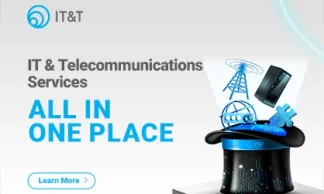When it comes to accelerating digital transformation, Hewlett Packard Enterprise’s intelligent edge helps you drive growth and efficiencies by extracting more from the immense quantity of data generated by the digitisation of billions of things.
What is Edge Computing?
Edge computing is a distributed, open IT architecture that features decentralised processing power, enabling mobile computing and Internet of Things (IoT) technologies. In edge computing, data is processed by the device itself or by a local computer or server, rather than being transmitted to a data centre.
The move to Edge computing is already delivering results - everywhere. New experiences are being created. Operations are being made smarter. And more wireless is being deployed to make it all happen. Edge computing is creating new experiences, accelerating operations, and evolving infrastructures for 5G.
Edge Computing – A Game Changer
There are many kinds of edges: a manufacturing floor, a building, a campus, a city, a crop field, a wind farm, a power plant, an oil rig, a sports arena, and more. Massive amounts of data are created and can be collected and analysed at every edge. When used in context, and in a timely manner, this real-time data can yield all sorts of interesting and invaluable insights. Edge computing use cases include:
- Improving safety in industrial settings, such as air quality in mining through wearables
- Preventive and predictive maintenance for machinery through sensors in production facilities
- Precision agriculture to monitor data in the field to improve crops
- Enhancing citizen safety through real-time video monitoring and analytics of traffic, public transit, special events, etc.
- Creating engaging experiences at entertainment venues through services that improve fan experience and operations
- Enhancing patient experiences with connected care via mobile and wearables, offering better ways to monitor (and self-monitor) patient health and empowering and connecting patients to real-time care when needed
Real-Time Action
Analysts predict that by 2022, 75 percent of enterprise-generated data will be created and processed outside the traditional centralised data centre or cloud.
Companies new to edge computing won’t arrive at a fully developed program overnight. There are many possibilities to explore and capabilities to consider. You need to build knowledge and relationships with operations technology and line-of-business teams, modernise infrastructure, find a pilot project, and then when all of that is done, learn how to scale.
To fully appreciate the power of Edge Computing, we need to examine the one resource we cannot manufacture or store: TIME.
The challenge is that decisions must be made in in REAL TIME. Here we define real time to be the maximum allowable time from when a condition is observed to the time corrective action must be completed. Today—for many businesses and processes, this time window of opportunity is measured in micro-seconds.
The decision-loop must complete data capture, data analysis and implement an action within this window of opportunity. If the process takes too long, the opportunity has vanished and is lost.
As more nuanced data leads to better decisions, the time it takes to transfer the captured data set to a central compute entity—such as the Data Centre or a Public Cloud takes too long. What Edge Computing does is that it REMOVES the data transfer delay making new operations at the Edge feasible.
Because real-time decision-making and action-taking is a universally desirable capability, Intelligent Edge Computing has broad applicability. We have provided some industry use cases below:
- In the financial industry it has made high-frequency, algorithmic trading feasible making markets more efficient.
- In healthcare, doctors now diagnose patients and provide instant remedies and procedures saving lives.
- In retail we now see the emergence of automated stores with no checkout counters or checkout lines saving shoppers time.
- In the entertainment industry we now see customised experiences and new autonomous rides further enhancing leisure.
- In manufacturing the way we produce goods and services are being digitally transformed to deliver better product with less waste.
- In the telecom industry 5G is being combined with decentralised micro-data centres to ensure the right data is available in the right place.
- In the oil & gas industry leak detection and equipment malfunction is now closely monitored and quickly rectified by leveraging distributed and automated systems.
- In the public sector and in defence safety and security is now being enhanced by real-time decision-making in the distributed, digital battlefield.
Fortunately, many use cases serve as inspiration for your own edge computing blueprint however every organisation has differing requirements. To help you develop your blueprint we have developed our “Edge Nxt Guide” which will help you address key areas of consideration in your planning, such as:
Handling high-volume data formats: such as video for facial and object recognition and quality control are excellent edge use cases. Also, predictive analytics in industrial settings require data centre-class edge computing power for maintenance and autonomous operations.
Architectural decisions required: different use cases need different levels of compute and bandwidth at the edge. Expect vendors to package basic architectures that IT needs to customise
New partnerships to build: Operations technology (OT) teams often buy technology but IT is tasked with maintenance. IT pros also benefit from deeper understanding of IOT.
Key challenges ahead: Developing the edge security framework, applying data management at vast scale and in new contexts, learning new skills, and working well with OT are just a few hurdles between you and the edge.





